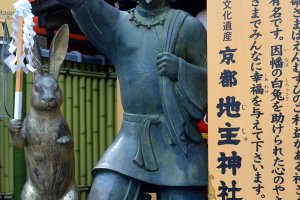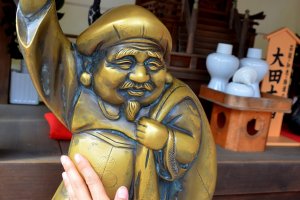“Falling in love is easy. Fools fall in love all the time. Staying in love is the test of time and the gift you give to one another daily….” Whether James A. Murphy was truthful or lying about the process of love, I have no idea. All I know is that there are many out there who are either in love or seeking love.
That much I can verify upon my arrival at the Jishu Shrine in Kyoto. Located behind the renowned Kiyomizu-dera, a Buddhist temple that is part of the Historic Monuments of Ancient Kyoto UNESCO World Heritage site, Jishu Shrine is revered as the Cupid of Japan.
Since 1300 years ago, many Japanese have pinned their hopes on the gods of love and matchmaking that are believed to reside at Jishu Shrine. After World War II, this ‘cupid of Japan’ rose to popularity and was visited by endless hopeful travellers from around the world.
Before you think that this is a shrine dedicated only for the lonely hearts, think again.
Within its compound, Jishu Shrine houses various gods that one may worship for different requests. Be it to pray for a new love, lasting relationship or even to thwart the efforts of a love rival, there shall be a deity that is capable of fulfilling your love wishes.
The main god, Okuninushi no Mikoto, is known as a sweet-tempered god that promotes endless caring love, wisdom and happiness. He was depicted in one of the most ancient history of Japan, the Kojiki, whereby he healed a deceitful rabbit whose skin was being peeled off. As one climbs up the stairs to the main building, don’t miss the statues of Okuninushi no Mikoto and the rabbit whom he helped to turn over a new leaf.
Enveloped by crowds of couples and excited young ladies, I was most amazed to see everyone praying piously in front of their selected deity. There are many indeed who seem determined to seek and maintain a love relationship.
Ahead of me, a lady giggled nervously as she tried to walk with closed eyes between two ordinary-looking stones. A man was walking beside her and giving directions, so that she could reach the other end successfully.
Looks can be deceiving. The significance behind the two ordinary-looking stones is anything but ordinary. Representing hopes for those who seek true love, these fortune-telling love stones are set 10 meters apart to pose a small challenge for singles.
If you can walk safely from one stone to the other while keeping your eyes closed, your wishes for love shall be fulfilled. Somehow, the idea that “love is blind” came to mind. As for the man whom I saw assisting the lady who eventually completed her challenge, it implied that she shall find true love but assistance would be needed.
The flurry of activities, the high spirits and a strong flavour of culture were most pronounced in this tiny but larger-than-life shrine. I was captivated by the people around me, and secretly hoped that all their wishes would come true.
If you worry that your prayers may get lost amidst the endless devotees, consider purchasing a lucky charm that you can bring along with you everywhere that you go. Besides charms associated with love and marriage, there are those for delivery, good health and even for academic success.
On your way out, check out the notice board of names in front of the shrine. These names belong to grateful couples who returned to the shrine to show their gratitude after they have gotten married. You will also find many foreigners’ name on this board.
































